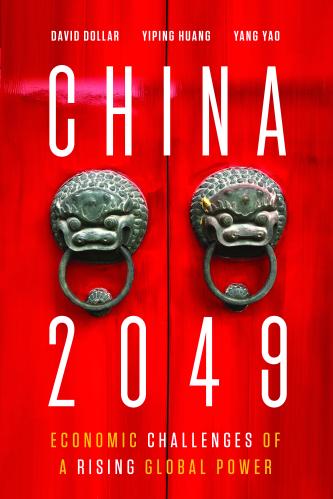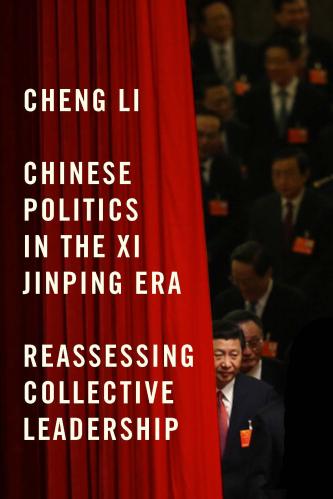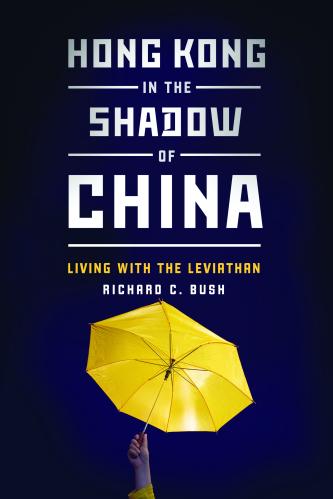 China’s entry into foreign assistance 20 years ago has largely coincided with the evolution and advancement of international development architectures in support of shared development good practice and norms.
China’s entry into foreign assistance 20 years ago has largely coincided with the evolution and advancement of international development architectures in support of shared development good practice and norms.
China’s One Belt and One Road (OBOR) — today BRI — launched by President Xi Jinping in 2013, is a dramatic collection of investment projects with the potential to reshape the international development landscape at national and international levels. The willingness of China to abide by international rules and processes for these investments has been secondary to its interest of shaping norms for its favor. Whether or not one considers BRI development as largely irrelevant, China is poised to use development-like transactions to extend its global presence and influence.
BRI represented a shift in China’s overall posture on assistance and its vision of foreign affairs more broadly. At the time of its launch, BRI was estimated at $113 billion; today, the total is estimated at a few times that number.1 Prior to BRI, China focused on domestic (not international) economic growth, which resulted in 70% of the population rising out of poverty by 2010. In 2000, China signaled interest in the development space beyond its own hemisphere when it hosted 44 African countries for the Forum on China-Africa Cooperation followed by a series of Chinese infrastructure projects as part of a larger “going out” effort for Chinese investment.2By 2014, China had articulated priority areas for aid in a white paper which cited a focus on win-win outcomes and the independence of developing countries.3
The reality of BRI, particularly its complex accounting, presents a contrast to the ideals and rhetoric presented in the Forum on China-Africa Cooperation final declaration and in China’s development white paper. Chinese assistance is made up of grants; concessional, interest free, and commercial loans (which often lead to high debt); and support from Chinese foundations and private individuals. Over time, funding has become even more complex as China has come to rely heavily on pooled financing from its Central Bank, the Chinese Import-Export Bank, the Asian Infrastructure Investment Bank, and the Asian Development Bank (ADB). In 2016, analysis by the United Nations Development Program (UNDP) cited discrepancies in the funding streams which resulted in an “unbalanced picture of China’s performance as a development partner.”4
UNDP’s report was part of a growing movement for major international reform in support of responsible financing in the international development system. Led by the OECD’s Development Assistance Committee (DAC), international donors increasingly called for improved accountability. These discussions were codified in the 2005 Paris Agreement on Development Effectiveness, which set the standard for measuring and tracking Official Development Assistance and outlined the (Paris) principles for improved: ownership, alignment, harmonization, management, and accountability. The 2008 Accra Agenda for Action and the 2011 Busan Agreement furthered the “reform agenda” for responsible development.5
Today’s international development architecture — including frameworks such as the Sustainable Development Goals (SDGs), the Paris Principles, and the infrastructure of the Organisation for Economic Cooperation on Development (OECD) — are well poised to advance compliance with good governance norms and practice for development. However, without China’s buy-in to the underlying premises (e.g., transparency, accountability, and participation), these frameworks lack influence. Getting to a steady state in compliance with international standards and norms will require all of China to commit to data sharing in advance of a shared rules-based order for international development.
In-country impact
As part of the development effectiveness conversations in capitals, the United States and other “like-minded” donors were keen to influence the emerging Chinese model through capacity-building and advocacy for good donor norms. However, BRI transactions did not pause for donors, conferences, or capacity workshops. Instead, from Sri Lanka to Djibouti, new large-scale infrastructure projects proceeded in a manner that contested donor transparency and global development norms.
Examples of these transactions and associated risks cut across geography — and several BRI projects, some of which preceded the initiative’s formal launch, have been controversial. These include: the 99-year lease for Sri Lanka’s Hambantota Port, use of the Port of Mombasa as collateral to finance new projects in Kenya, and Ethiopia’s mountain of growing debt owed to Beijing.6 While it may not be the intent of the project, the result often is unsustainable debt loads. For that reason, this so-called “debt trap diplomacy” is not just hyperbole; data from the Center for Global Development identified 8 countries (of 23 studied) that were at high risk of BRI-sourced debt distress leading to adverse impacts on planned public investment and economic growth.7 Less studied, but still as troubling, are the social, environmental, and human rights risks, including Cambodia’s Sihanoukville port project and Malaysia’s Melaka Gateway, billion dollar projects that disrupted local supply chains and ecosystems and increased reports of corruption.8
Data suggests that these are not one-off examples, but part of a trendline toward China’s flexibility at the expense of local ownership. The College of William & Mary’s extraordinary AidData project has shown that Chinese assistance is more likely to be associated with higher levels of local corruption, most likely due to the lack of internationally recognized institutional safeguards — such as “competitive bidding, citizen feedback mechanisms, blacklisting of corrupt firms,” and preference for individuals in power to determine projects (as opposed to industry standards for safeguards via social, need, and environmental analysis).9This “laissez-faire” approach has given rise to the label of “rogue donor,” for China’s misalignment with international standards, interest in supporting political elites, and decentralized management.10
New research from the Center for Global Development (CGD) shows that while there have been minor improvements in short-term accounting of China’s transactions by local governments, Chinese assistance remains insufficiently aligned to “country plans and priorities,” in the long term.11This strategic misalignment illustrates China’s vision of assistance. Strategic planning and priority setting require buy-in to the national objectives and a willingness to adapt priorities to local demands as opposed to externally or politically mandated ones. Traditional development donors take great (bureaucratic) pain to support the systems and priorities of the host country. Placing the host country at the center of the process leads to strong relationships and often stronger development outcomes. Conversely, China has snubbed both international regulation and local implementation norms.
As a result, protests and public pressure from Kazakhstan to the Maldives have led governments to turn away from assistance and others to be voted out of office.12 China has taken steps to respond to domestic and international critique. In 2016, Beijing announced an effort to “green” BRI through application of international standards for energy and climate risk.13 In April 2018, China created an International Development Cooperation Agency (CIDCA) to oversee BRI projects, shifting control from the Ministry of Commerce. In 2019, the government issued “Measures for the Administration of Foreign Aid” guidance, which focused on improved monitoring, transparency, and accountability.14
So far, reform has had a limited impact. Analysis by the International Development Studies found that green BRI standards were appropriate, but had little impact on implementation.15 Similarly, while the launch of CIDCA was a symbolic step it has not been sufficient for meaningful reform and centralization. In its current form — a deputy-level ministry with a limited budget and staff — CIDCA lacks the authority and systems to meaningfully manage global projects.16
Where China has been successful in pushing back on its critics is leveraging international institutions. During China’s annual Belt and Road Forum in 2019, United Nations Secretary-General António Guterres launched a partnership between BRI and the U.N. SDGs.17 The secretary-general’s endorsement was not conjecture. The endorsement formalized a partnership between BRI and SDG programming in a number of developing countries. This was remarkably novel; while it is common for bilateral donors to work with U.N. agencies on broad themes, this was the first time the U.N. had engaged in such co-planning, funding, and branding at the project level.18
This interest in shared activities, however, has not resulted in China’s buy-in to the accountability and transparency norms that underlie the SDGs. In fact, China continues to be out of step with global financing for development norms, even while they are absolutely foundational for achieving the SDGs. Analysis of similar partnerships between BRI and the Multilateral Development Banks resulted in CGD’s conclusion that these organizations were “lending their reputations” while not getting broader adherence to standards.19 As a result of not aligning with financing standards, measuring levels of assistance and impact of BRI projects remains “guess work.”
Lack of good data and a general shirking of international norms and practices is a major critique from other bilateral donors, who struggle with how to engage China on development.
Lack of good data and a general shirking of international norms and practices is a major critique from other bilateral donors, who struggle with how to engage China on development. The prevailing options — contain, collaborate, or compete — lack the nuance necessary to respond to the shape-shifting nature of BRI. This tension is perhaps the most acute in developing countries where national governments are sandwiched between donors with disparate approaches, often focused on a range of their own national political interests. The tension between global powers is likely to continue to play out in the trajectory of developing countries and the contraction and expansion of their debt burdens and open governance space.
Despite the ongoing debate and well-known risks of partnerships at the international level, developing countries continue to sign on to receive support from China. According to the New York Times, China invested some $128 billion through BRI in the first 11 months of 2019, up 41% over the same time period in 2018.20 Memoranda of Understanding (MOUs) between China and new BRI partners have increased from a modest 65 of MOUs in 2016 to 138 in 2020.21
A convergence on COVID-19
The COVID-19 crisis has led to an acceleration of three key trends in the scope and scale of China’s transactions in developing countries. First, China has increased the visibility and quantity of donations of personal protection equipment and medical technology (i.e. “mask diplomacy”); second, BRI projects are financed by a heavier mix of Chinese private foundations and private individuals (mirroring efforts to bridge domestic financing gaps); and third, an uptick in exports of technology infrastructure (such as artificial intelligence and facial recognition software) which has the potential to threaten local civil liberties and privacy rights long after COVID-19.
China has faced reputational damage due to their COVID response, as well as a perceived failure to contain the virus and persecution of dissent. This damage, paired with the high levels of requests and the unlikely nature of debt relief efforts, could lead to an over-extension of BRI. The potential loss of sovereignty for developing countries unable to get debt relief may leave Beijing’s positive and reformist messaging of BRI largely irrelevant.22 It may also represent a moment for China to consolidate its investments into a more strategic and centrally mandated portfolio as opposed to an ad hoc collection.
Conclusion
For China, BRI is many things. It is an opportunity to expand the reach of their own economic development (off-loading surplus resources highlighted by the “Made in China 2025 Initiative”). It is also a strategic reimagining of China’s place in the world and a diplomatic opportunity to expand influence including over global governance and development frameworks.
BRI is also many things for developing countries. New bridges and roads are enticing, but may come with strings attached (increased unsustainable debt, non-equitable growth, increased levels of control, authoritarianism, and rescission on human rights) that have long-term, negative impact on the country’s autonomy.
Multilateral organizations also see both challenges and opportunities around BRI as it relates to their investments in global governance. They are weighing the potential for shared resources against the rule-bending ambitions of China’s approach. So, too, are bilateral donors, who are struggling with inherent security and ideological tensions.
UNDP’s 2016 recommendations on China’s assistance rings true today: accurate, detailed, and timely information is foundational for planning and decisionmaking.23This was put most impactfully by the CGD: “data reporting should not be a battle. Data should be offered and made readily available to relevant recipient government authorities and to the public, to enhance monitoring and accountability activities. This level of detail is not an optional extra — it is central.”24
National level governments must make data central to BRI.25 Local civil society and grassroots activists should demand a voice at the table and accountability among donors. International bilateral donors, while frustrated by the inability to engage China in meaningful reform, must reorient competition upwards in support of a new development order. Finally, multilaterals should use global targets to advance transparent investments and rule following. The SDGs are an excellent international framework for shared value, as is the OECD-DAC, but only when collaborators buy into their critical premises. When donors like China pick and choose among targets, these platforms — along with the critical norms for good development they represent —are indeed weakened.
The positions articulated here do not reflect those of the Council on Foreign Relations, the Center for Strategic and International Studies, or the author’s home institution.
-
Footnotes
- For more background on the evolution of BRI, see Leah Lynch, Sharon Andersen, and Tianyu Zhu, “China’s Foreign Aid: A Primer for Recipient Countries, Donors, and Aid Providers,” (Washington, DC: Center for Global Development, July 9, 2020), https://www.cgdev.org/publication/chinas-foreign-aid-primer-recipient-countries-donors-and-aid-providers.
- “Beijing Declaration of the Forum on China–Africa Cooperation,” (Ministry of Foreign Affairs of the People’s Republic of China, October 2000), https://www.fmprc.gov.cn/zflt/eng/zyzl/hywj/t157833.htm.
- “China’s Foreign Aid (2014),” (Beijing, State Council of the People’s Republic of China, July 2014), http://english.www.gov.cn/archive/white_paper/2014/08/23/content_281474982986592.htm.
- “Demand-Driven Data: How Partner Countries are Gathering Chinese Development Cooperation Information,” (New York: United Nations Development Programme, September 21, 2016), https://www.cn.undp.org/content/china/en/home/library/south-south-cooperation/demand-driven-data—how-partner-countries-are-gathering-chinese.html.
- “The High Level Fora on Aid Effectiveness: A history,” Organisation for Economic Cooperation on Development, https://www.oecd.org/dac/effectiveness/thehighlevelforaonaideffectivenessahistory.htm.
- “Belt and Road Tracker,” Council on Foreign Relations, https://www.cfr.org/node/212878.
- John Hurley, Scott Morris, and Gailyn Portelance, “Examining the Debt Implications of the Belt and Road Initiative from a Policy Perspective,” (Washington, DC: Center for Global Development, March 4, 2018), https://www.cgdev.org/publication/examining-debt-implications-belt-and-road-initiative-a-policy-perspective.
- Chris Horton, “The Costs of China’s Belt and Road Expansion,” The Atlantic, January 9, 2020, https://www.theatlantic.com/international/archive/2020/01/china-belt-road-expansion-risks/604342/; Wade Shepard, “Inside the Belt and Road’s Premier White Elephant: Melaka Gateway,” Forbes, January 31, 2020, https://www.forbes.com/sites/wadeshepard/2020/01/31/inside-the-belt-and-roads-premier-white-elephant-melaka-gateway.
- Bradley C. Parks and Austin M. Strange, “Autocratic Aid and Governance: What We Know, Don’t Know, and Need to Know,” (Williamsburg, Virginia: AidData, May 2019), https://www.aiddata.org/publications/autocratic-aid-and-governance-what-we-know-dont-know-and-need-to-know.
- Daniel R. Russel and Blake Berger, “Navigating the Belt and Road Initiative,” (New York: Asia Society Policy Institute, June 2019), https://asiasociety.org/policy-institute/belt-and-road-initiative.
- Jonathan Glennie, Peter Grinsted, and Hannah Ryder, “China’s Aid from the Bottom Up: Recipient Country Reporting on Chinese Development Cooperation Flows,” (Washington, DC: Center for Global Development, July 9, 2020), https://www.cgdev.org/publication/chinas-aid-bottom-up-recipient-country-reporting-chinese-development-cooperation-flows.
- Michael Safi, “Maldives voters throw out China-backed strongman president,” The Guardian, September 24, 2018, https://www.theguardian.com/world/2018/sep/23/maldives-voters-throw-out-china-backed-strongman-president.
- “President Xi calls for building ‘green, healthy, intelligent and peaceful’ Silk Road,” State Council Information Office of the People’s Republic of China, June 23, 2016, http://www.scio.gov.cn/32618/Document/1481477/1481477.htm.
- “CIDCA issues Measures for the Administration of Foreign Aid draft,” China Aid Blog, November 20, 2018, http://china-aid-blog.com/2018/11/20/cidca-issues-measures-for-the-administration-of-foreign-aid-draft/.
- Melissa Leach, Jing Gu, Hannah Corbett, and Taidong Zhou, “The Belt and Road Initiative and the SDGs: Towards Equitable, Sustainable Development,” Institute of Development Studies Bulletin 50, no. 4 (December 2019): 139, https://www.researchgate.net/publication/338294217_The_Belt_and_Road_Initiative_and_the_SDGs_Towards_Equitable_Sustainable_Development’_1-6_1.
- Cheng Cheng, “The Logic Behind China’s Foreign Aid Agency, the Carnegie Endowment,” Carnegie Endowment for International Peace, May 21, 2019, https://carnegieendowment.org/2019/05/21/logic-behind-china-s-foreign-aid-agency-pub-79154.
- The Sustainable Development Goals are a list of 17 internationally agreed outcomes to addressing global challenges related to poverty, inequality, climate change, environmental degradation, peace, and justice.
- Kristine Lee and Alexander Sullivan, “People’s Republic of the United Nations: China’s Emerging Revisionism in International Organizations,” (Washington, DC: Center for New American Security, May 14, 2019), https://www.cnas.org/publications/reports/peoples-republic-of-the-united-nations.
- John Hurley, Scott Morris, and Gailyn Portelance, “Examining the Debt Implications of the Belt and Road Initiative from a Policy Perspective.”
- Keith Bradsher, “China Renews Its ‘Belt and Road’ Push for Global Sway,” The New York Times, January 15, 2020, https://www.nytimes.com/2020/01/15/business/china-belt-and-road.html.
- Christoph Nedopil Wang, “Countries of the Belt and Road Initiative,” Green Belt and Road Initiative Center, https://green-bri.org/countries-of-the-belt-and-road-initiative-bri.
- Azeem Ibrahim, “China’s Debt Diplomacy Will Get a Coronavirus Boost,” Foreign Policy, March 23, 2020, https://foreignpolicy.com/2020/03/23/china-coronavirus-belt-and-road-bri-boost-debt-diplomacy/.
- “Demand-Driven Data,” United Nations Development Programme.
- Jonathan Glennie, Peter Grinsted, and Hannah Ryder, “China’s Aid from the Bottom Up.”
- Melissa Leach, Jing Gu, Hannah Corbett, and Taidong Zhou, “The Belt and Road Initiative and the SDGs.”






Commentary
The evolving relationship between the international development architecture and China’s Belt and Road
Who is making the rules?
October 2020